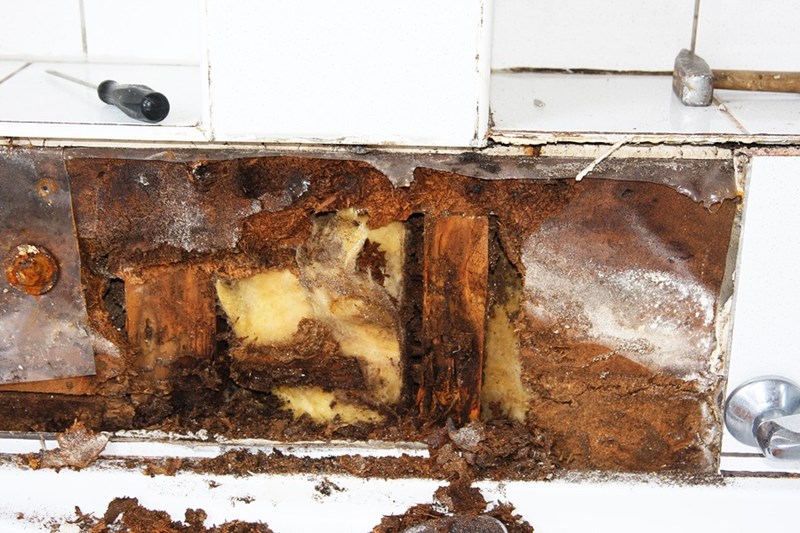Usual Reasons For Water Damage in a Bathroom
Usual Reasons For Water Damage in a Bathroom
Blog Article
Just how do you actually feel in relation to How to Repair and Prevent Bathroom Water Damage?

The bathroom is extremely susceptible for damp accumulation and potential water damage due to the regular use water in it. This article provides basic inspection strategies to assist detecting water damage dangers.
The constant use of water in the shower room makes it extremely prone for wet accumulation as well as possible water damages. By inspecting it on a regular basis, you can decrease water relevant problems.
The following collection of examinations is very easy to execute and need to be done when in every three months in order to maintain your washroom healthy and to stop prospective water damages triggered by the tub, the shower, pipe joints and plumbing, sinks, cupboards, as well as the bathroom
Do not forget carrying out these assessments as well as be comprehensive while executing them. Bear in mind that these easy examinations can save you a great deal of money by offering very early indications for water damage
Sinks as well as Cabinets
Sinks as well as cupboards are revealed to dampness as well as moisture everyday and are often neglected. Evaluate on a regular basis under the sink and also on the countertop above it. Fix any drip in the trap as it might suggest drainpipe issues. Check out the sink, slow draining pipes may show a blocked drainpipe. Change sink seals if they are broken or loosened.
Bath tub as well as Shower
The shower and also tub require unique interest and upkeep. Check the tiles and also change if split. Ensure that there is no missing out on grout in between the ceramic tiles. Evaluate as well as change fractured caulking at joints where the wall surfaces satisfy the floor or the bathtub. Clogged drains pipes and pipelines troubles will protect against the bath tub from drying and also may show major problems below the bathtub. Talk to a specialist right away to avoid structural damage. Focus on stainings or soft areas around the tub walls as they may show an inner leakage.
Plumbing
Signs for water damage are hard to identify given that the majority of pipelines are set up inside the walls.
Pay unique focus to floor covering and wall surfaces moisture as well as spots as they may indicate an unseen plumbing problem. Check dampness degrees in adjacent areas too.
The Toilet
The bathroom is an at risk water joint. Examine the water lines as well as search for leaks around the commode seat, in the hose pipe, and under the water storage tank. If you find any signs of dampness on the flooring around the bathroom, check for leakages in the toilet rim and also storage tank seals.
Realize that hanging bathroom dish antiperspirants increases the opportunities for obstructions.
TIPS TO PREVENT WATER DAMAGE IN THE BATHROOM
The average household uses approximately 80-100 gallons of water per person per day. For a family of 4, that's almost 2,500 gallons of water a week! The largest portion of this consumption comes from bathroom use. Flushing the toilet uses the most water, followed by taking a shower or bath. With that much water running through the home, water damage in the bathroom is bound to happen. Knowing how to spot signs of a water leak is essential to preventing long-term damage. This guide provides you with tips to reduce the impact of water damage on your bathroom.
CAUSES OF BATHROOM WATER DAMAGE
Pipe breaks are the most common cause of water damage we see in our daily jobs. The age of a pipe plays a large role in a pipe break as well as corrosion. Over time, the metal begins to break down, allowing water to escape. Frozen pipe breaks are also a concern in the winter months. Toilet overflows caused by paper products or children flushing inappropriate items. Degraded caulking around the toilet or bathtub can allow water seepage, sometimes behind the fixture, into the subfloor or walls. Condensation forms when the water in a pipe is cooler than the air temperature. Beads of water form on the exterior of the pipes, sometimes so much so that the water begins to drip and pool below. Sink or shower backups created by poor drainage. HOW TO PREVENT WATER DAMAGE IN YOUR BATHROOM
Inspect your toilet supply line for worn or frayed hoses and replace them as needed. Winterize your plumbing to prevent a frozen pipe break. Use vent fans to prevent condensation that can lead to mold growth. Routinely check and replace degraded caulking around your toilet or bathtub. Increase the temperature in your toilet tank and insulate your pipes during the warm summer months to keep condensation from forming. Use child safety locks on the toilets. Flush only toilet paper. "Flushable" wet wipes are actually not good for your plumbing system. Additionally, feminine hygiene products should not be flushed. Prevent water from escaping the tub or shower. Make sure shower curtains are in good condition. Inspect shower doors and replace the seal strip if necessary. Wipe up any water that accumulates on the floor and use bath mats. Water left to sit can cause damage to the tiles and flooring. Refrain from using bath products containing heavy oils to avoid a clogged drain.

Do you like reading about Preventing Water Damage in the Bathroom? Try to leave a remark further down. We will be interested to hear your thoughts about this content. In hopes that you visit us again in the future. Sharing is nice. One never knows, you may just be helping someone out. Thank-you for your time spent reading it.
Browse Our Site Report this page